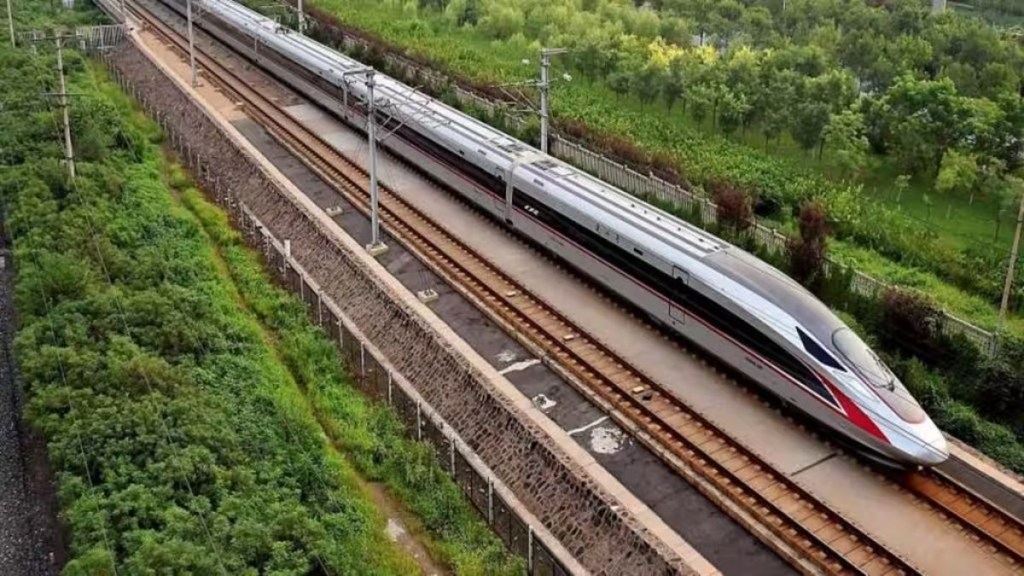As India eagerly waits for its first bullet train project, Railway Minister Ashwini Vaishnaw on Thursday (March 28) shared an update on the completion of another significant milestone. Vaishnaw took to X, formerly known as Twitter, to share a video of the nation’s first ballastless track system being developed for the bullet train project between Mumbai and Ahmedabad.
According to the tweet shared by Vaishnaw, National High Speed Rail Corporation Limited (NHSRCL) has completed the viaduct work on the 153 km stretch of the ambitious Bullet Train project, which has a 320 kmph speed barrier. NHSRCL has also completed the 295.5 km of pier work on the 508-km-long corridor between Mumbai and Ahmedabad scheduled to be operational by 2026.
“Bharat’s first ballastless track for Bullet Train. 320 kmph speed threshold, 153 km of viaduct completed, 295.5 km of pier work completed. More to come in Modi 3.0,” the Railway Minister said on the microblogging platform.
Watch video of India’s first ballastless track for bullet train
What is ballastless track?
The use of ballastless track, also known as ‘slab track,’ is gaining traction in several countries, particularly for high-speed rail lines. India has adopted the J-slab ballastless track system for the first time, marking a significant innovation in railway infrastructure. This advanced track system involves pre-cast track slabs meticulously equipped with fastening devices and rails.
Ballastless slabs are placed on the reinforced concrete (RC) track bed, which has a thickness of approximately 300mm and is constructed in situ at the site for individual UP and Down track lines on the viaduct top. The RC track bed boasts a width of 2420mm, ensuring stability, according to NHSRCL.
Anemometers to enhance safety of bullet train
Indian Railways plans to install anemometers at 14 strategic locations spanning Gujarat and Maharashtra. “Ensuring the highest safety standards for the #BulletTrain project, anemometers at 14 key locations across Gujarat and Maharashtra will be installed,” the Railway Minister had said.
Furthermore, Vaishnaw, while speaking at NDTV Indian of the Year award on March 24, said, “The bullet train project has to be seen from the perspective of integrating economies. In the first corridor that Indian railways are doing, Mumbai, Thane, Vapi, Baroda, Surat, Anand and Ahmedabad – all these economies will become one single economy. So you can have breakfast in Surat, go and complete your work in Mumbai, and come back with your family in the night.”
Notably, the anticipated cost of the project stands at approximately Rs 1.08 lakh crore. Under this budget, the Central government has pledged Rs 10,000 crore, with Gujarat and Maharashtra each contributing Rs 5,000 crore. The remainder of the funding will be obtained through a loan from Japan, featuring a minimal interest rate of 0.1 per cent.
